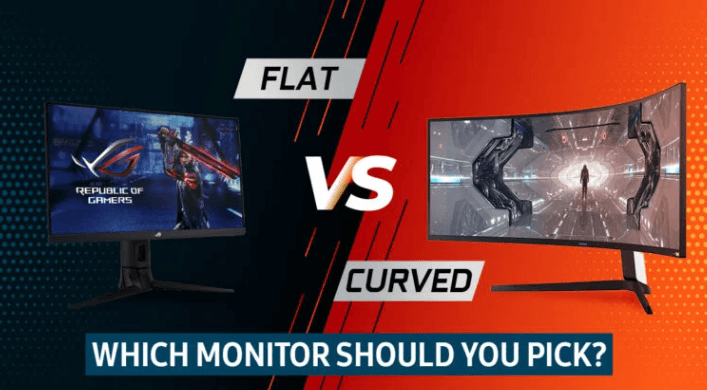For decades, people have been using flat-screen monitors for their computing needs. However, in recent years, a new type of monitor has entered the market, and it is changing the way we view content on our screens: the curved monitor. The question is, is a curved monitor worth the extra cost, or is a regular flat monitor still the way to go? In this article, we will explore the pros and cons of each type of monitor and try to determine which is better for different use cases.
Firstly, let’s start with the standard flat-screen monitor. Flat monitors are the traditional and most commonly used monitors in the market. They come in various sizes and resolutions, and they are relatively cheaper than their curved counterparts. Additionally, flat monitors are easy to use and do not require much adjustment. Most people are accustomed to using a flat monitor, so there is no learning curve when it comes to using them.
However, one of the disadvantages of a flat-screen monitor is that it does not offer an immersive viewing experience. Flat monitors have a limited viewing angle, which means that the image quality is reduced when viewed from the sides. Additionally, flat monitors can cause eye strain and fatigue due to their straight edges, which can cause a glare that can harm your eyesight.

On the other hand, curved monitors offer a more immersive and natural viewing experience. Curved monitors are designed to mimic the shape of the human eye, which means that they have a wider field of view and less distortion. As a result, curved monitors offer a more cinematic and immersive experience, making them ideal for gaming and multimedia use.
Another advantage of curved monitors is that they reduce eye strain and fatigue. The curvature of the screen minimizes the amount of light reflected, reducing the glare and the amount of blue light emitted, which can cause eye strain and fatigue. The curvature also allows for a more comfortable viewing experience, reducing the need to tilt your head to get a good view.
However, curved monitors also have some disadvantages. They tend to be more expensive than flat monitors, and they require a larger desk space due to their wider shape. Additionally, curved monitors are not ideal for multitasking as the curvature can distort text and images when viewed at an angle.
In conclusion, the choice between a flat or curved monitor depends on the intended use and the preferences of the user. For office work, a flat monitor is the ideal choice due to its affordability and the need for a clear and sharp image. Flat monitors are also better suited for multitasking, as the flat surface is less likely to distort text and images.

On the other hand, if you are a gamer or a multimedia enthusiast, a curved monitor is the way to go. The immersive experience and natural viewing angle offer an unparalleled experience, making gaming and multimedia use much more enjoyable. Additionally, the reduction in eye strain and fatigue makes it easier to spend longer periods in front of the screen without adverse effects.
Ultimately, the decision between a flat and curved monitor is a personal one, and there is no right or wrong answer. Both types of monitors have their advantages and disadvantages, and it is up to the user to determine which is the best fit for their needs. However, it is worth noting that with the rise of curved monitors, it is likely that flat monitors will become less popular in the future, especially as more people are looking for an immersive and natural viewing experience.





